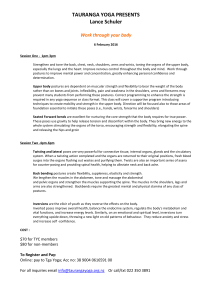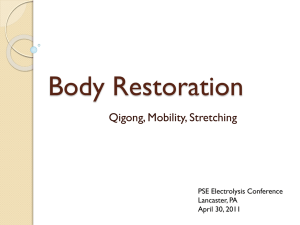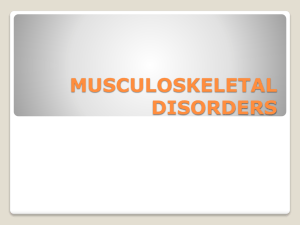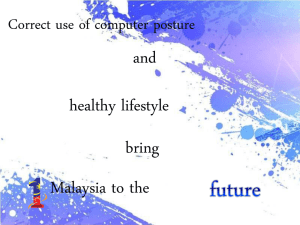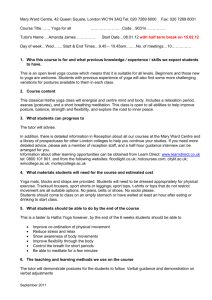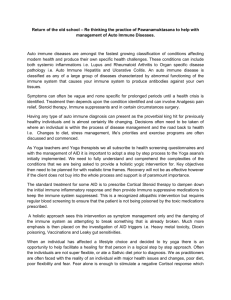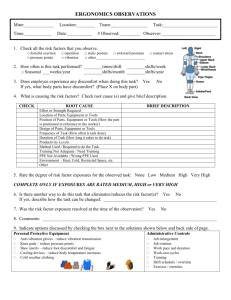Cool Yoga Germany Inspya Yoga Immersion with Lance Schuler
advertisement
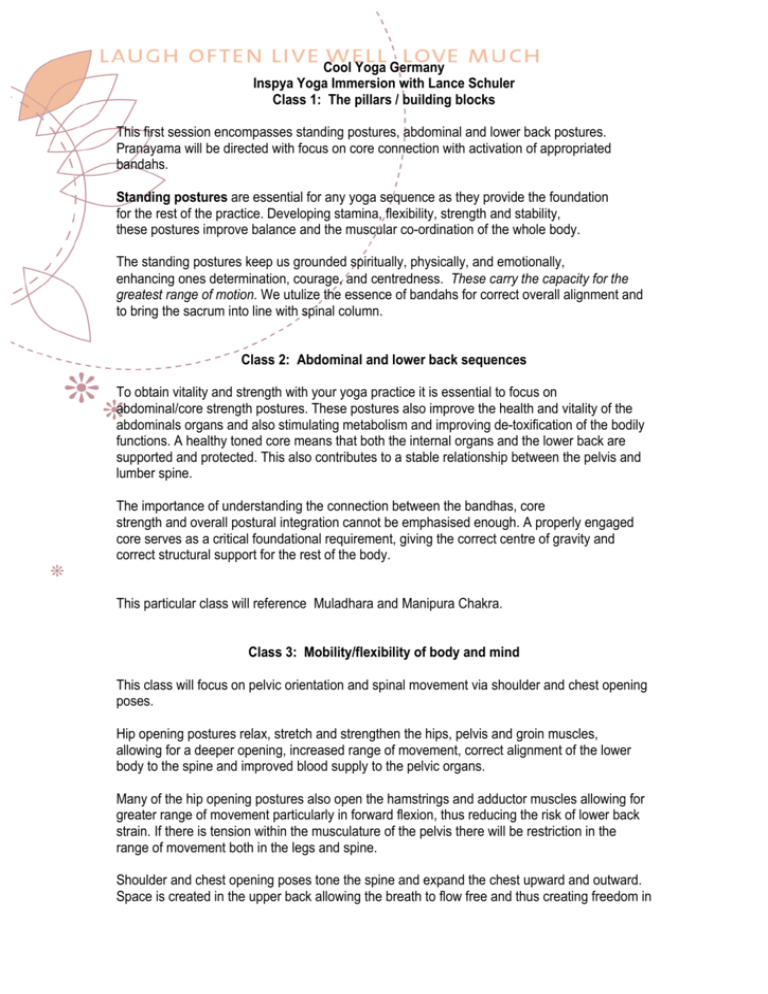
Cool Yoga Germany Inspya Yoga Immersion with Lance Schuler Class 1: The pillars / building blocks This first session encompasses standing postures, abdominal and lower back postures. Pranayama will be directed with focus on core connection with activation of appropriated bandahs. Standing postures are essential for any yoga sequence as they provide the foundation for the rest of the practice. Developing stamina, flexibility, strength and stability, these postures improve balance and the muscular co-ordination of the whole body. The standing postures keep us grounded spiritually, physically, and emotionally, enhancing ones determination, courage, and centredness. These carry the capacity for the greatest range of motion. We utulize the essence of bandahs for correct overall alignment and to bring the sacrum into line with spinal column. Class 2: Abdominal and lower back sequences To obtain vitality and strength with your yoga practice it is essential to focus on abdominal/core strength postures. These postures also improve the health and vitality of the abdominals organs and also stimulating metabolism and improving de-toxification of the bodily functions. A healthy toned core means that both the internal organs and the lower back are supported and protected. This also contributes to a stable relationship between the pelvis and lumber spine. The importance of understanding the connection between the bandhas, core strength and overall postural integration cannot be emphasised enough. A properly engaged core serves as a critical foundational requirement, giving the correct centre of gravity and correct structural support for the rest of the body. This particular class will reference Muladhara and Manipura Chakra. Class 3: Mobility/flexibility of body and mind This class will focus on pelvic orientation and spinal movement via shoulder and chest opening poses. Hip opening postures relax, stretch and strengthen the hips, pelvis and groin muscles, allowing for a deeper opening, increased range of movement, correct alignment of the lower body to the spine and improved blood supply to the pelvic organs. Many of the hip opening postures also open the hamstrings and adductor muscles allowing for greater range of movement particularly in forward flexion, thus reducing the risk of lower back strain. If there is tension within the musculature of the pelvis there will be restriction in the range of movement both in the legs and spine. Shoulder and chest opening poses tone the spine and expand the chest upward and outward. Space is created in the upper back allowing the breath to flow free and thus creating freedom in the heart space. The chest should be broad, active and full whilst the abdomen long, passive and empty. Shoulder opening can be performed taking the shoulders forward (flexion), backward (extension), inward (medial rotation) and outward (lateral rotation). It is necessary to maintain full range of motion in the shoulders to support activity in the upper body and in yoga to attain flexibility in the shoulders for binding, extensions and support. Class 4: Balance and upper body strength Poses in this class tone the back, chest, neck, shoulders, arms and wrists, toning the organs of the upper body, especially the lungs and the heart. They help develop a sense of balance and improve nervous control throughout the body and mind. These postures also improve mental power and concentration, greatly enhancing personal confidence and determination: allowing the students to gain a sense of natural presence within them and creating strength in their communication with the outer world. This class will cover a supportive program introducing techniques to create mobility and strength in the upper body. Direction will be focused also to those areas of foundation essential to initiate these poses (i.e.hands, wrists, forearms and shoulders) Developing strength and flexibility in women: Women generally face two challenges when practicing these poses: poor upper body strength and an imbalance of weight distribution as greater proportion of their weight being is in their hips and thighs. To manage and balance this weight, women need to develop more strength in their upper extremities, back and abdomen. Developing strength and flexibility in men: For men, the most common challenge is poor hip flexibility which makes lifting up into these postures difficult, even though their upper bodies may be strong. Here, men need to develop increased hip flexibility and both male and female can offset their respective limitations by developing more strength in their shoulders and torso. Class 5: Backbends, twists, forward bends and inversions Inversions are the elixir of youth as they reverse the effects on the body. Inverted poses improve overall health, balance the endocrine system, regulate the body’s metabolism and vital functions, and increase energy levels. Similarly, on an emotional and spiritual level, inversions turn everything up side down, throwing a new light on old patterns of behaviour. They reduce anxiety and stress and increase self confidence. Sufficient means of preparation will be adhered to during this class, ensuring all safety principals. Back bending postures create tremendous flexibility, suppleness, elasticity and strength. We lengthen the muscles in the abdomen, tone and massage the abdominal and pelvic organs and strengthen the muscles supporting the spine. The muscles in the shoulders, legs and arms are also strengthened. Backbends require the greatest mental and physical stamina of any class of postures. Back bending opens the upper back, chest, shoulders and front groins, releasing stored emotions, bringing about the sense of freedom and happiness, lightening our thoughts and relieving depression Initially, backbends create an element of fear; emotionally and physically. To counter this we warm and open the body with preparatory postures such as shoulder openers, spinal extensions and hip openers. Twists and lateral poses are powerfully transformative for connective tissue, internal organs, glands and the circulatory system. When a twisting action is completed and the organs are returned to their original positions, fresh blood surges into the organs flushing out wastes and purifying them. Twists are also an important series of asana for counter-posing and providing spinal health, helping to alleviate neck and back ache. On an emotional and spiritual level twisting brings consciousness to the knotted areas in life. Seated forward bends: are excellent for nurturing the core strength that the body requires for true power. These poses use gravity to help release tension and discomfort within the body. They bring new energy to the whole system stimulating the organs of the torso, encouraging strength and flexibility, elongating the spine and releasing the hips and groin.
